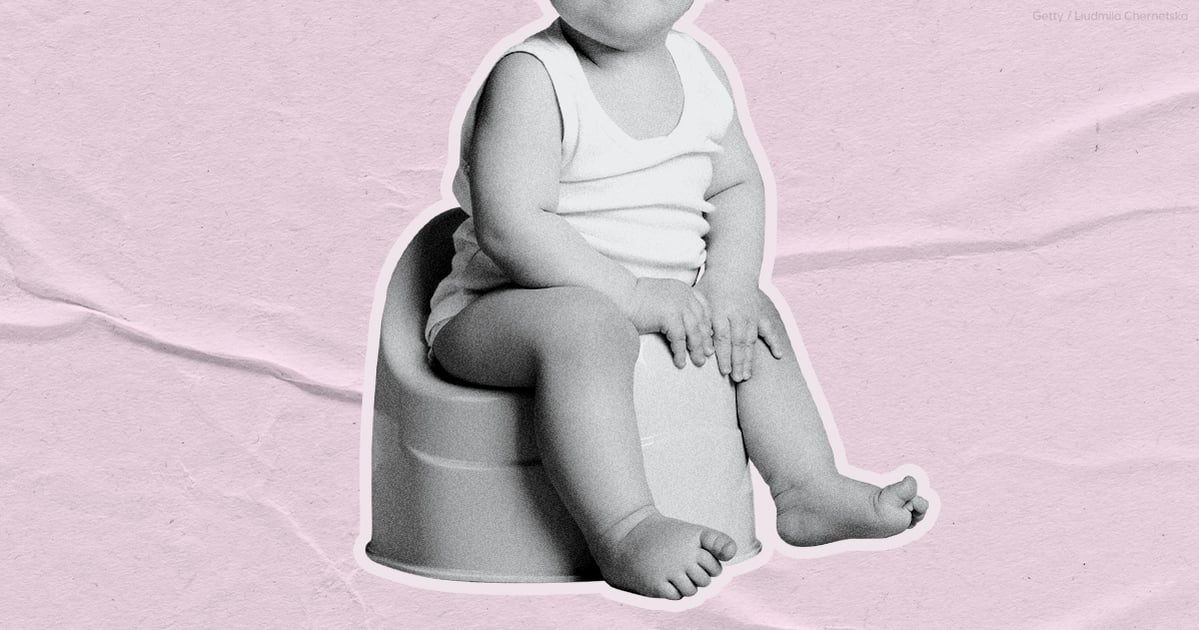One of the first things new parents learn when welcoming a baby into their lives is that raising a child isn’t cheap. According to research by the National Diaper Bank Network from 2022, disposable diapers cost approximately $80-$100 a month per baby, which adds up to about $1,200 for the first year. That number doesn’t drop significantly until most American toddlers are ready for potty training at age 2 or 3. Some parents, however, have found a way to significantly lower the cost with a diaper-free practice known as elimination communication.
What is elimination communication, and is it right for your family? We spoke with a medical professional and parenting expert to address common misconceptions and learn more about the practice of ditching diapers.
Experts Featured in This Article
Jenelle Ferry, MD, is a board-certified neonatologist at Pediatrix Medical Group in Tampa, FL.
Andrea Olson is the creator of Go Diaper Free, a resource for parents interested in elimination communication.
What Is Elimination Communication?
A journal article in the American Academy of Pediatrics defines elimination communication, also known as natural infant hygiene, as “using the infant’s natural timing and cues to recognize when they need to defecate or urinate.”
Essentially, parents observe their baby’s signs that it’s time to do their business so they can whisk them to the toilet in time. When those cues are established, babies will need fewer diapers – or they can go completely diaper-free – from an early age because their parents hold them over the toilet instead.
How Does Elimination Communication Work?
“The basic concept relies on recognizing cues and then relying on reflexes,” neonatologist Jenelle Ferry, MD, tells PS. When the baby gives a telltale sign, the parent takes them into the washroom and holds them safely above the toilet (sans diaper) so they pee or poop there.
While holding their baby above the toilet, some parents help their baby relax by making a soft hissing sound. “This often results in a reflex relaxation of sphincters and therefore voiding into the toilet,” Dr. Ferry says.
Some common cues that a baby needs to have a bowel movement or urinate include squirming, straining, or grunting. Over time, parents may also begin to recognize patterns for when their child has to use the toilet, like after naptime or a meal.
What’s the Difference Between Elimination Communication and Potty Training?
While both practices aim to help young children learn to use a toilet, during elimination communication, the goal is for the parents to get their baby to the toilet in time. During potty training, on the other hand, the child learns how to identify for themselves that they need the restroom.
“Elimination communication essentially relies on reflexes to release bowel or bladder function when naked,” Dr. Ferry says. “This is different than potty training, where a child recognizes the signals of needing to use the bathroom and chooses the appropriate time to coordinate sphincter release,” she notes.
What Age Should You Start Elimination Communication?
“There is not a well-established ‘right age’ to attempt elimination communication,” Dr. Ferry says, but there are a few varying opinions on the timeline. She explains that some experts suggest starting before your baby is 4 months old so they haven’t “learned to use a diaper yet,” while others argue “starting later may result in the infant taking longer” to learn the practice.
In some countries where the practice is common, including Kenya, China, and Vietnam, Dr. Ferry says, the common age to start elimination communication is reported to be a little later, around 6 to 9 months.
Andrea Olson – a mom of six and the creator of Go Diaper Free – first tried elimination communication with her oldest child. Olson says she witnessed friends struggling with traditional potty training and “wanted to avoid that.” While researching the practice during her pregnancy, Olson remembers it sounding “complicated and hard,” but she still jumped right in when her son was born.
“The first few weeks, we spent a lot of time observing him and his signals,” she says, “and then began cueing him.” Within a few months, they hit their stride: “By about 5 months old, we were in such a rhythm, and people started asking me about it – and asking me to teach them how to do it.” Olson has since used elimination communication with all of her kids.
Common Misunderstandings About Elimination Communication
Since elimination communication isn’t widespread in the United States just yet, there are still many misconceptions and misunderstandings. Olson says people often come to her with questions or false assumptions about the practice. In her experience, some of the most common misconceptions about elimination communication are as follows:
- Parents who practice elimination communication let their babies pee and poop all over the place. “We definitely use diapers – and most parents that practice elimination communication do – but the difference is, we use them as a backup instead of a full-time toilet,” Olson says.
- Elimination communication only works when there’s a stay-at-home parent. Olson says that most of the parents who Go Diaper Free works with use some form of child care. “Some caregivers are more than happy to help, and others don’t. But you can still do it at home when you’re with your baby,” she says.
- You can’t potty train an infant. “That is correct,” Olson says. The issue here is that elimination communication is being confused with potty training. “We aren’t ‘potty training’ our infants. It’s different; we are learning to recognize their cues, just like you would learn the cry of your baby and understand it’s time for a feeding or that they are tired,” Olson says.
What Are Some Benefits of Elimination Communication?
Olson says one huge benefit she saw with elimination communication was the added bonding she had with her kids by being so connected and aware of their cues. “The connection piece is huge – where you can really feel in tune with what your baby needs,” she says. “It can really help form that parents’ sense of intuition. Plus, it’s always great to have fewer diapers to change, especially the poopy ones!”
Dr. Ferry says that looking at the difference in average age when a child is considered potty trained, elimination communication might be a factor in those who were able to reach that milestone sooner. “There has been some published data from Asian countries like Vietnam with cultural practice of elimination communication. These have reported an average potty training age of 2 years,” Dr. Ferry says.
In the United States, where elimination communication is done far less, the average child is potty trained between the ages of 2 and 3, though Dr. Ferry notes that “it’s unclear if this difference is solely due to elimination communication.”
What Are Some of the Criticisms of Elimination Communication?
Dr. Ferry says there are some reasons elimination communication “can be problematic” for parents, but it’s more about the expectations people have than the practice itself.
“Trying to achieve milestones based on expectations outside of [a baby’s] developmental capacity can sometimes lead to more difficulty,” Dr. Ferry says. The reason this may happen for some families, she notes, is because an “infant does not have the developmental awareness nor appropriate sphincter control to prevent being wet or dirty,” so we need to have realistic expectations on what a baby can and cannot do in terms of voiding.
According to Dr. Ferry, a child doesn’t have the “brain development” to control their bladder and bowel until around 2 or 3 years of age, and any expectations before that is unrealistic and can potentially backfire. “Trying to achieve complete potty training too early may increase symptoms of dysfunctional voiding with incomplete or delayed bladder emptying,” Dr. Ferry warns.
Should You Try Elimination Communication?
There really isn’t a right or wrong choice here, and every child is different.
If you’ve been on the fence about trying elimination communication, however, Olson recommends you go for it. “I would say just try it. Babies are so smart,” Olson says, adding that elimination communication doesn’t have to be an all-or-nothing practice. “Doing elimination communication does not mean that all you will think about is pottying or that all you’ll be doing is taking your baby potty,” she says. “You can do it part-time; just offer the potty when you’re changing the baby, or you can go full on.”
Devan McGuinness (she/they) is a Canadian disabled writer, editor, and social strategist who covers politics, entertainment, parenting, and lifestyle. Devan has contributed to PS, Fatherly, Parents, Scary Mommy, Mom.com, and more over her 10-plus years in digital media, specializing in stories that matter most to families.




